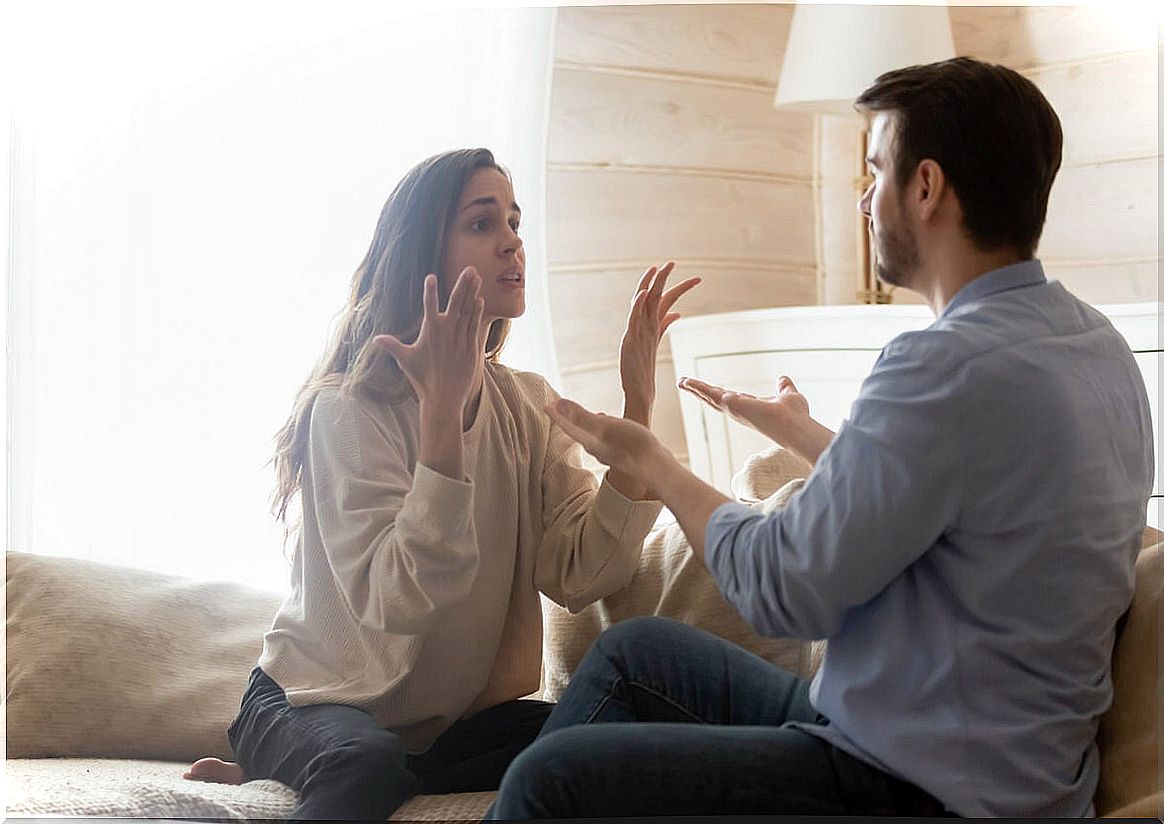How To Break The Inertia Of Negative Interactions With Your Partner?

In all our emotional ties we experience what we colloquially call “good and bad streaks.” In addition, in the sphere of the couple these dynamics are much more visible, since generally this person is the one with whom we spend the most time and with whom we maintain a closer relationship.
We may think that the state of our relationship is the result of chance, but in reality it totally depends on our actions. Therefore, we want to talk about how to break the inertia of negative interactions with your partner.
You have seen several times that, no matter how hard you try, sometimes it seems impossible to stop arguing with your partner. Even if that is your intention and your purpose, any gesture or word is misinterpreted and the conflict resurfaces in the blink of an eye.
Before becoming alarmed or thinking about ending the relationship, it is important that you understand how human communication develops and how you can intervene.

The origin of negative interactions
When we live with someone, that person is present in our best moments, but also in the worst. It is a witness to our stress, our physical and mental fatigue, our anger and our bad mood.
A relationship has to be balanced; But, when creating a common project, we must be aware that, some days, the other will only be able to give 20% and we will have to contribute 80%. And, on other occasions, the opposite will happen.
Thus, when faced with a bad answer, a comment or an unfortunate gesture, it is important to be assertive and communicate to the other that something has bothered us in a clear and respectful way. However, we are often unable to act in this way. On the contrary, we take offense and apply indifference, contempt or silence towards our partner. Or, conversely, we overreact with an equally hurtful response.
If this happened in a timely manner, it would not have much relevance. The problem arises because, in general, communication patterns tend to be maintained.
Communication patterns tend to stay
Communication between two people consists of constant feedback. When we speak to others, we do not do so on the basis of neutrality, but on the basis of what we have previously perceived from them. The trajectory of previous interactions with a person predisposes us to react to them in a more positive or negative way.
And the same thing happens with the couple. There are relationships in which its members hardly argue and others that are in constant conflict. This occurs because certain communication patterns have taken hold and ingrained.
Your partner says or does something that annoys you and you react with a reproach, an offense or a cold and hurtful attitude. The other person, on the other hand, feels hurt and responds, again, in an inappropriate way. Finally neither of them gives their arm to twist and both consider that the other is to blame.
We clearly remember all the comments and actions of the other that have caused us discomfort, but we do not realize how we are also contributing to maintain this dynamic of negative interactions with the partner.

How to break the inertia of negative interactions with your partner?
These types of situations are difficult to resolve because we consider that it is the other who is to blame and, therefore, the responsibility to take the first step. If we become aware that we are both fueling these dynamics, we will come to a simple conclusion: we can stop this inertia and help create a more positive one. Simply stop reacting based on the other and deliberately decide with what type of gesture, word or interaction you want to nurture the communication.
Take the first step and redirect the course. Negative interactions with your partner tend to perpetuate, but positive ones too. Therefore, when you change your contributions, the communication will change. At this point it is no longer about who is to blame, or who did what, because you have both contributed. It’s not about who started it, but who ends it. And that person can be you, it is in your hands.
Over time you will learn to detect these patterns when they start, you will be able to see clearly how negative interactions are escalating and you will be able to stop them in time. In this sense, consider what the other contributes, but also what you contribute.









